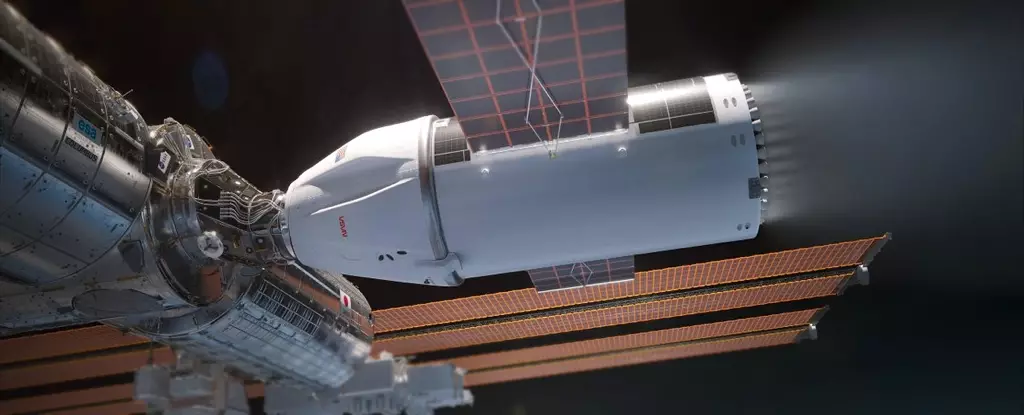The International Space Station (ISS) has served as a vital platform for space exploration for over two decades, hosting hundreds of astronauts during its time in orbit. However, the clock is ticking for the ISS as NASA recently announced its plans to decommission the station with the help of Elon Musk’s SpaceX. This decision comes as a part of a larger effort to transition towards new space stations and technologies.
To execute the decommissioning process, SpaceX is working on an innovative plan that involves the creation of a supercharged Dragon spaceship. This upgraded Dragon will be equipped with a high-powered trunk and a total of 46 Draco engines, significantly more than its regular counterpart. The goal is to create a “deorbit vehicle” that is capable of providing the necessary thrust to safely push the ISS out of orbit and guide it towards a controlled descent into a remote location in the ocean.
According to Sarah Walker, SpaceX’s director of Dragon mission management, one of the most critical aspects of the operation will be the final burn that propels the ISS on its path towards reentry. This maneuver must be precise and powerful enough to account for various factors such as atmospheric drag and torques, ensuring that the station reaches its intended destination without any risks to populated areas. The planned final descent location is in a remote area, such as the South Pacific, to minimize any potential hazards.
Walker emphasized the significance of being part of this mission to close a significant chapter in space exploration history. SpaceX’s involvement in both the birth and end of the ISS era highlights the company’s contributions to the field. Since Dragon was the first commercial vehicle to dock with the ISS in 2012, it is fitting that it will also be the last to depart from the station. Walker expressed gratitude for the opportunity to play a role in this final step of the ISS’s journey.
While the decommissioning of the ISS marks the end of an era, it also paves the way for new opportunities in space exploration. NASA and Roscosmos, the Russian space agency, are planning to continue utilizing the ISS until 2030 before transitioning to new space stations. The hope is that private companies, like SpaceX, will play a crucial role in the development of future space stations and become key partners in space exploration endeavors. NASA envisions a future where private space stations host multiple customers, further expanding human presence in space.
The decommissioning of the ISS represents a significant milestone in the history of space exploration. SpaceX’s role in this operation showcases the company’s capabilities and commitment to advancing space technologies. As we bid farewell to the ISS, we look towards a future where collaboration between government agencies and private companies will lead to new advancements and discoveries in space.


Leave a Reply